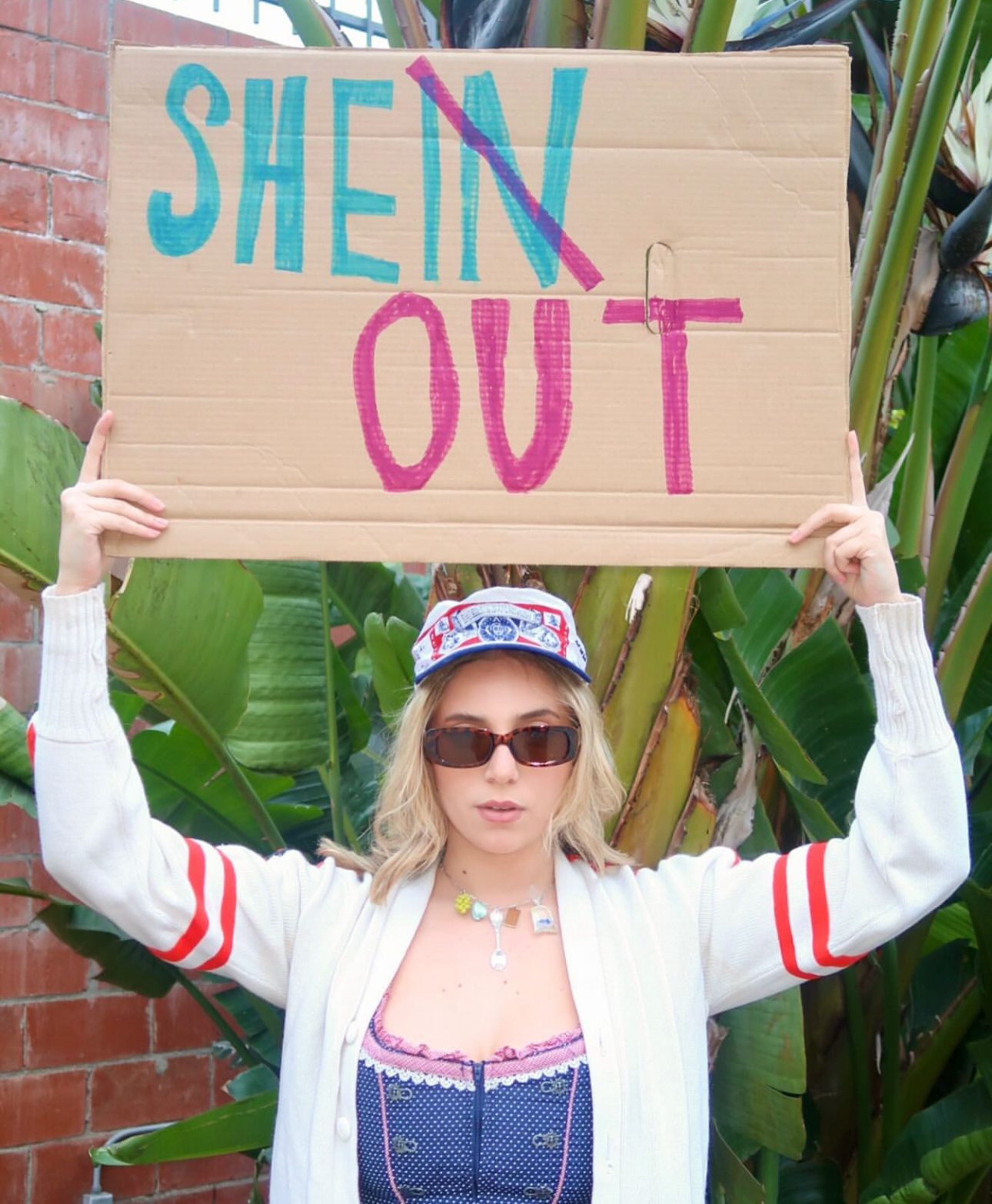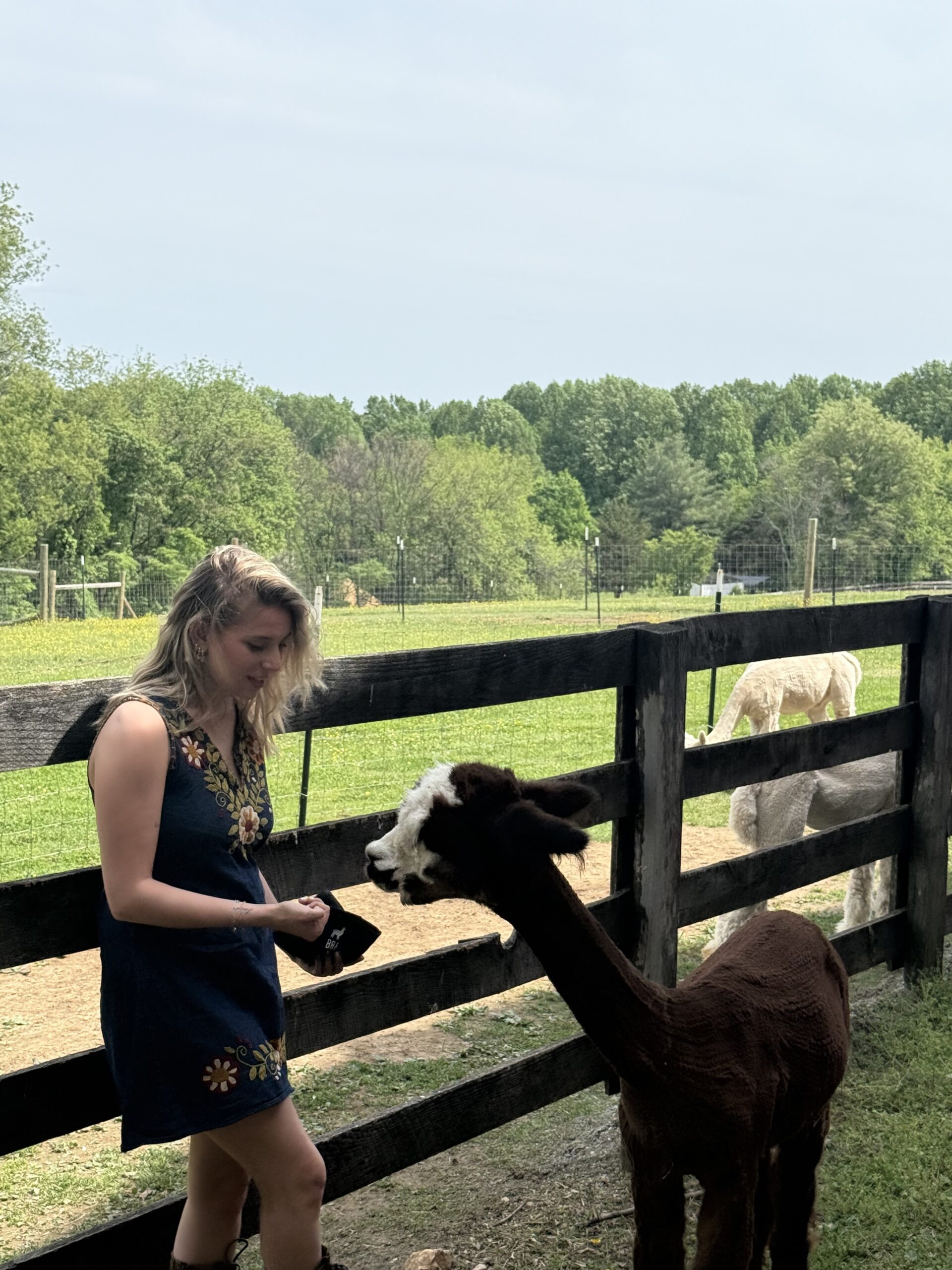The fabric of the future could be created in a lab, made to disintegrate faster without leaching dangerous chemicals into the earth as it breaks down. A small but growing group of innovators are trying to stop the wastefulness and pollution right at the source, by developing a new way to produce fabric. Making material, with the thought of disposing responsibly, at the onset.

Why Biodegradable Fabrics are Needed
Why is this so desperately needed? Most people know that fashion is a major global polluter but look at this fact below and let that sit in:

Think about it, that cheap t-shirt you buy could live up to 200 years in some landfill. Not only is that piece of clothing taking up space on this planet, for practically FOREVER. But that’s not all. As that piece of clothing decomposes it releases methane, a harmful greenhouse gas which is a significant contributor to climate change. And there’s even more…the dyes and chemicals in the fabric and other components of the clothing, shoes and accessories can leach into the soil, contaminating both surface and groundwater. Oy! Now think about that cute $5 top of Forever 21. Do you look at it any differently?

Obviously, step one, reduce waste. Did you know that up to 95% of the textiles that are landfilled each year could be recycled. Matter of fact, if every article of clothing’s lifespan could be extended just 9 more months, it could reduce carbon, water and waste footprints by 20-30%. A big next step is for the textile industry to innovate a better product that is less harmful for the environment.
New Biodegradable Clothing
I recently read the most interesting article in Scientific American that explains what some textile innovators are doing to combat fashion pollution at its earliest stage. “They are using live organisms to grow pieces of biodegradable textiles, creating environmentally friendly materials in the laboratory—and are even producing some near-complete items without the need for factory assembly.” Biodegradable fibers are those which decompose quite easily and naturally using microorganisms. For example, 100% cotton fabrics are biodegradable. Hemp fibers become naturally softer over time and therefore make the fabric easily biodegradable.
Examples of Non-Biodegradable Fabrics:
- Acrylic
- Polyester
- Rayon
- Nylon
Benefits of Biodegradable Fabrics
The process of making this biodegradable fiber is simple to understand but, I’m sure, not as easy to produce. According to this article, unlike many of our current clothing that are woven from plastic-based acrylic, nylon or polyester threads and then cut and sewn into fabrics, the new fabrics would be bioengineered. That means they’d be made from living bacteria, algae, yeast, animal cells or fungi—which would break down into nontoxic substances when eventually thrown away. Another benefit is the organisms can be grown to fit molds, producing the precise amount of fabric needed to create an article of clothing without generating any excess materials to throw away. How cool is that?

Algae
One organism of choice is algae. There are three steps to make alga-based yarn. First, a sugar called alginate is derived from kelp…and powdered. Next the alginate powder is turned into a water-based gel, to which plant-based color (such as carrot juice) is added. Finally, the gel is extruded into long strands of fiber that can be woven into a fabric. So far this research is promising because the fiber is strong and flexible making it useful for a wide range of different garments. Another plus, the algae biodegrades faster than cotton and doesn’t require pesticides or large areas of land to produce.
Theanne Schrios, a professor at Fashion Institute of Technology (F.I.T. in NYC) has used her fiber (explained above) to knit items, including a top that she wore when she delivered her TED Talk on sustainable fashion.
Biodesigned clothing is hopefully the wave of the future. There is still much work to do and then it has to be scalable and affordable or it’ll be an idea stuck in a lab. Watch this space.
If you have any questions, please contact me at LexySilverstein@gmail.com.
Follow me on my socials:
- Instagram: @lexysilverstein
- Youtube: Lexy Silverstein
- Twitter: @eLEXYfy
- TikTok: @lexysilverstein
- Facebook: Lexy Silverstein
- Liketoknow.it/lexysilverstein
Remember to eLEXYfy! Make the Ordinary – Extraordinary!
FAQs
What are biodegradable fabrics?
Biodegradable fabrics are textiles that can decompose naturally through the action of microorganisms like bacteria and fungi. This process breaks down the fabric into simpler substances, returning them to the earth. Think of it like composting your food scraps, but for your clothes! Common examples include cotton, linen, silk, and wool, which, when untreated with harmful chemicals, can break down relatively quickly in the right conditions.
The speed of biodegradation depends on factors like the fabric’s composition, the environment it’s in (soil, water, etc.), and the presence of microorganisms. For instance, a 100% cotton t-shirt in a compost heap will decompose faster than one blended with synthetic fibers or treated with dyes and finishes. Choosing biodegradable fabrics is a step towards reducing textile waste and minimizing the environmental impact of fashion.
Which fabrics are biodegradable?
Natural, plant-based fabrics that are biodegradable include cotton, silk, wool, linen, hemp, bamboo, and jute.
How long does it take fabric to decompose?
The time it takes for fabric to decompose varies wildly, depending on the material and the environment it’s in!
For natural fibers, the good news is they break down relatively quickly in ideal conditions like a compost pile:
- Linen and Hemp: These are superstars, decomposing in as little as 2-6 weeks.
- Cotton: Pure cotton usually takes about 1-5 months.
- Wool: This can take a bit longer, generally between 1 to 5 years.
- Silk: Due to its dense protein structure, silk can take 1 to 5 years to decompose.
However, when these natural fabrics are in a landfill, where oxygen and microorganisms are scarce, their decomposition can be significantly slower. Blends with synthetic fibers or chemical treatments also slow down the process.
Now, for synthetic fabrics, the story is quite different. These materials are essentially plastics and take a very long time to break down, if at all:
- Nylon: Can take 30 to 40 years.
- Polyester and Acrylic: These are the longest-lasting, potentially sticking around for 20 to 200 years, or even more. When they do break down, they often turn into microplastics, which further pollute the environment.
So, when you choose your clothes, considering what they’re made of is super important for minimizing their environmental impact at the end of their life!
Is cotton biodegradable?
Yes, cotton is inherently biodegradable! As a natural fiber derived from plants, cotton is made of cellulose, which microorganisms in the environment can readily break down. This means that, unlike synthetic fabrics, cotton can return its components to the earth, contributing to a more circular system.
However, the speed and completeness of cotton’s biodegradation can be influenced by a few things:
- Treatments and Finishes: Cotton fabrics often undergo processes like dyeing, printing, and applying finishes (e.g., wrinkle-resistant, water-repellent, anti-shrink). While research shows that cotton can still biodegrade even with these treatments, they can slow down the process. Some harsh chemicals might also impact the ecological footprint of the breakdown.
- Blends with Synthetics: If cotton is blended with synthetic fibers like polyester or spandex, the garment will no longer be fully biodegradable. The cotton portion will decompose, but the synthetic part will persist in the environment for a very long time, potentially shedding microplastics.
- Environmental Conditions: For optimal biodegradation, cotton needs the right conditions—think moisture, oxygen, and the presence of active microorganisms, like in a compost pile. In oxygen-deprived environments, like tightly packed landfills, even 100% cotton can take much longer to break down and may produce methane, a potent greenhouse gas.
So, while cotton is a fantastic biodegradable choice, opting for organic, untreated, and 100% cotton garments is the best way to ensure it can truly return to nature without a fuss!
Is acrylic fabric biodegradable?
No, acrylic fabric is not biodegradable. It’s a synthetic fiber, meaning it’s derived from fossil fuels and is essentially a type of plastic. Because of its plastic composition, acrylic fabric does not break down naturally in the environment through the action of microorganisms.
Instead, when discarded, acrylic garments can persist in landfills for hundreds of years, contributing significantly to plastic pollution. Furthermore, every time acrylic clothing is washed, it sheds tiny plastic microfibers that end up in our waterways and oceans, posing a serious threat to marine life and ecosystems. This makes acrylic one of the least environmentally friendly fabrics in the fashion industry.
Is Spandex biodegradable?
No, spandex is not biodegradable. Spandex, also known as elastane or Lycra, is a synthetic fiber renowned for its exceptional elasticity and stretch. It’s a type of polyurethane, which is a plastic-based polymer.
Like other synthetic materials derived from petrochemicals, spandex does not decompose naturally in the environment through biological processes. Instead, it can persist in landfills for a very long time—potentially hundreds of years—contributing to plastic waste. Additionally, washing garments containing spandex can release microplastic fibers into our waterways, further exacerbating pollution concerns.
Is nylon fabric biodegradable?
No, nylon fabric is not biodegradable. Nylon is a fully synthetic fiber, which means it’s made from petrochemicals (like petroleum) and is essentially a type of plastic. Because of its synthetic composition, it cannot be broken down by microorganisms in the natural environment.
When discarded, nylon garments can take a very long time—potentially many decades or even centuries—to break down in landfills, contributing to persistent plastic waste. Furthermore, just like other synthetic textiles, nylon fabrics can shed microplastic fibers into our waterways when washed, leading to environmental pollution in oceans and other ecosystems.
Is rayon fabric biodegradable?
Yes, rayon fabric is generally considered biodegradable, but there’s a bit more to it than with purely natural fibers like cotton or linen!
Here’s why: Rayon is often referred to as a “semi-synthetic” fiber because it’s made from regenerated cellulose, which comes from natural sources, usually wood pulp. Because its core material is plant-based, it has the ability to break down in the right conditions through microbial action.
However, the biodegradability of rayon can vary depending on the specific type of rayon and the manufacturing process used:
- Viscose Rayon: This is the most common type of rayon. While it is biodegradable due to its cellulose base, the conventional production process often uses harsh chemicals (like carbon disulfide and sodium hydroxide) that can have a significant environmental impact during manufacturing. The residues of these chemicals can slightly affect its decomposition process compared to untreated natural fibers, but it will still break down over time.
- Lyocell (e.g., Tencel™): This is a more environmentally friendly type of rayon. Its production process uses a closed-loop system where solvents are recycled, minimizing chemical waste. Lyocell is highly biodegradable and compostable, often breaking down quite rapidly.
- Modal: Similar to lyocell, modal is another form of rayon known for its softness and drape. It’s also biodegradable, and its production process is generally considered more sustainable than conventional viscose.
So, while rayon as a category is biodegradable, choosing types like lyocell or modal often means you’re opting for a fiber that is not only biodegradable but also produced with fewer environmental concerns!




